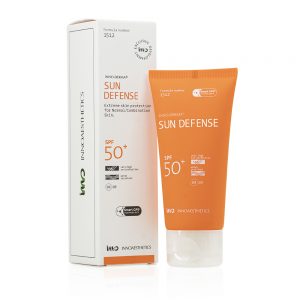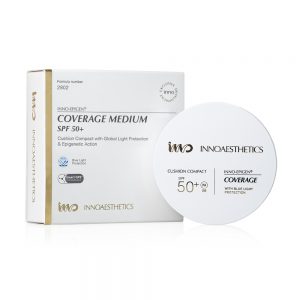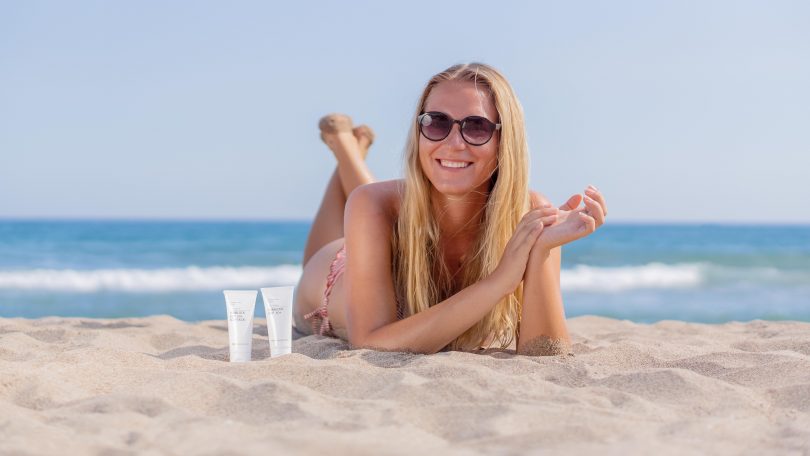Nowadays, the huge flow of information on the Internet and the rising organic trends have arisen an ongoing debate on whether we should or not use sun creams containing chemicals. On one hand, the media is warning of the dangers of UV rays and dermatologists recommend using high SPF sunscreens to prevent skin cancer; on the other, some voices maintain that a healthy lifestyle should be linked to 100% natural products despite they could be less effective.
The truth is that, whether we like it or not, we all should protect ourselves as much as we can from the damaging UV radiation to prevent skin cancer and use it every single day if we also want to prevent photoaging and hyperpigmentation.
In this post, we are going to answer some questions about sun creams and give you some tips about how to properly use them and store them.
-
IS THERE ANY DIFFERENCE BETWEEN SUNBLOCK AND SUNSCREEN?
Though most people use both words interchangeably, there is a difference between them as they act differently and use different types of filters.
Sunscreens are a combination of active ingredients, such as Avobenzone, Octisalate, Oxybenzone, Homosalate, etc., that work as chemical filters to protect from UV damage. When you apply sunscreen, UV radiation still go through the skin, but it is absorbed by the filters and transformed into heat energy, reducing significantly its potential damaging effects. They should be applied around 30 min before being exposed to let the actives penetrate. Usually are remarkably invisible.
Sunblocks are composed of mineral or physical filters (generally less damaging to the environment) such as Zinc oxide or Titanium dioxide. These filters form a layer on the skin surface and reflect off a wide range of UV rays, preventing them from penetrating the skin. They offer immediate protection and are highly effective though normally thicker and much more visible than sunscreens.
Nowadays, most cosmetic brands combine these two types of filters to offer the effectivity of physical filters without losing the cosmetic properties the chemical ones, that can also have moisturizing and antioxidant effects. This fact also explains why in vernacular language these terms are equally accepted as sun creams regardless the amount of chemical or mineral filters they contain.
-
COULD SUN CREAMS REALLY BE WATER RESISTANT?
Some are made of specific components to better resist sweat and water, mostly those which are specially recommended for sports. However, remember to apply it 30 min before if it contains any chemical filters.
Some of these protectors are labeled with indications that water resistance last only for 30 or 40 min, but it does not mean that after that time you must go back to your towel to reapply more sun cream, they do lose some effectivity after that time but they should be still protecting you.
What would certainly wash off physical filters, more than water, is friction, so avoid scratching your skin or toweling off after having applied it.
-
CAN I USE MY SUNSCREEN/SUNBLOCK FROM ONE YEAR TO ANOTHER?
Cosmetic products in Europe have one or two expiration dates, that is, the shelf life and the PAO (period after opening).
The SHELF LIFE indicates the time that the product will keep its original strength before opening. Although expiration dates are not required in all countries ―in U.S., for instance, they are not required―it is recommended not keeping them for longer than 3 years.
The PAO determines the period during which the product will be stable and in good condition after the first opening. It is normally indicated by a symbol of an open jar with the time in months inside the symbol.
All European cosmetics with a lifespan longer than 30 months must present the PAO. In U.S., though being not required, many products also include it.
Remember that if you do not store the product correctly it may go bad before expiration.
-
HOW TO KNOW IF MY SUNSCREEN HAS GONE BAD?
You can easily detect if your sun cream is in bad condition: If the components have dissociated, you may notice different textures such as liquid and a thick paste that are not mixing together. The smell and color may have also changed due to degradation. If it has happened to your sun cream, better get rid of it and invest in a new one.
Cosmetics can lose stability for two main reasons:
1-You haven’t stored it properly
Sun protectors and cosmetics in general don’t like direct sunlight, extreme heat, nor severe temperature changes, so they will last longer if you keep them in a cool and dry place, away from direct sunlight.
2-The product has expired:
As mentioned before, check the expiration date and PAO.
OUR SUGGESTION




